Southeast Asian Diaspora Resiliency

Binh Danh
Instagram - https://www.instagram.com/binhtdanh/
Website - https://binhdanh.com/
Binh Danh reconfigures traditional photographic techniques and processes in unconventional ways to delve into the connection between history, identity, and place. Danh is noted for his contemporary daguerreotypes of national parks. Their reflective surfaces enable people of all backgrounds to see themselves as a part of the beauty of the American landscape. His work has been collected by the Fine Arts Museums of San Francisco, the Museum of Fine Arts, Boston, the National Gallery of Art, Washington, the San Francisco Museum of Modern Art, and the San Jose Museum of Art, among others. Binh Danh: The Enigma of Belonging was the inaugural recipient of the Minami Book Grant for Asian American Visual Artists at Radius Books in 2023. He is an associate professor of art at San José State University.
Spark Interview with Binh Danh
Copyright May 2006 KQED San Francisco
Danh is noted for his contemporary daguerreotypes of national parks. Their reflective surfaces enable people of all backgrounds to see themselves as a part of the beauty of the American landscape.
From the Series — Xanh, LÀ
In the Xanh, LÀ series, Binh Danh explores how farming communities adapt in response to the landscapes they encounter. Through portraiture and landscapes, he illustrates the paths people carved from Vietnam to Louisiana and the traditions they carried and created along the way. Just as settlers before them brought their traditions and relationships to the land, the Vietnamese community of Louisiana has made its mark on the local landscape and been marked by it in return. Danh uses the traditional daguerreotype process to create his images, allowing viewers to see their reflections in the work. This merging of the self with the photographed landscape encourages viewers to reflect on the challenges of assimilating and becoming overlooked, much like features in the landscape.
The title for this section of the exhibition comes from the Vietnamese word for green, màu xanh lá, which directly translates to the color of leaves, illustrating the central role of the natural landscape in many of our interpretations of the world. “Xanh, LA,” is a playful reimagining of the word intended to evoke a fictional place on the map.
Xanh, LÀ Project Statement by Binh Danh
In Vietnamese, "xanh lá" means green leaves and plenty sprouting out of the rich, fertile soil of the New Orleans area. As a Vietnamese-American child growing up in California, the camouflage uniform worn by actors in Vietnam War Hollywood movies haunted me in the innocence of my child’s mind; the color green was associated with war, military, death, and Agent Orange deforestation.
Later in my adult life, Vietnamese culture's greenness was redeemed in my mother's garden, where Asian organic vegetables were grown to make the delicious Vietnamese meals that nourished my siblings and me. It was also where I had the idea of printing images in leaves through the action of photosynthesis, which became one of my signature works as an artist. When I was invited to visit New Orleans, I was already wondering about what Vietnamese people here grow, given that the climate is humid subtropical, similar to what you would find in Southeast Asia. I marveled at what I saw in these gardens: hanging winter melon (bí dao), elephant ear stalk (bạc hà), red Thai chilies (ớt), rice paddy herb (ngò om), okra (đậu bắp), bitter melon (mướp đắng), and lemongrass. The lemongrass is significant, as it was one of my earliest childhood memories. I recalled my sisters carrying me as my family, and I gathered wild lemongrass growing along the highway in our first few weeks in America until a neighbor informed us that we should not do that. It was a survival skill we carried with us when we left the refugee camp in Malaysia, where gathering and fishing were to supplement the ration the UN Refugee Agency gave.
The garden portraits represent the Vietnamese community's strength and the immigrants' ability to adapt to their new homeland. Many participants expressed that they care for a garden and watch it blossom—nothing more and nothing less. Gardening gives them peace of mind and the ability to connect with the land and air.
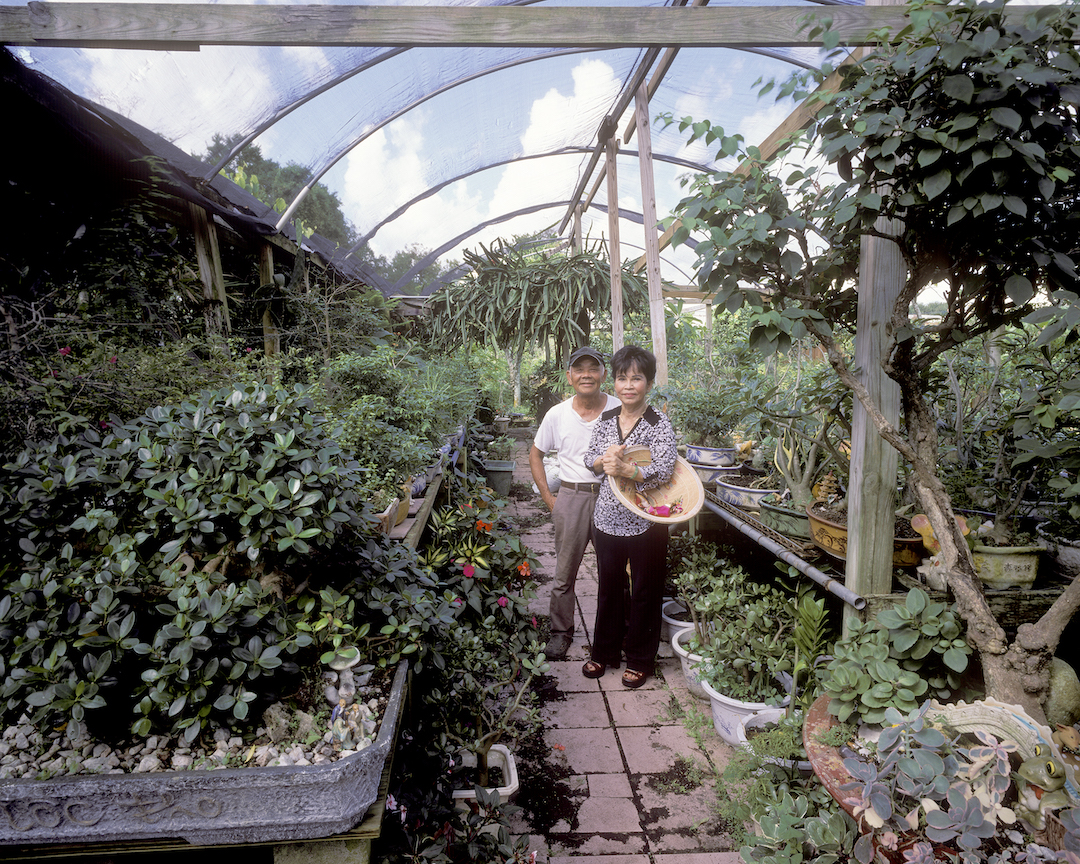
Y Bui and Kim Le of Marrero, LA
Digital print
40 x 50 inches
2018
NFS
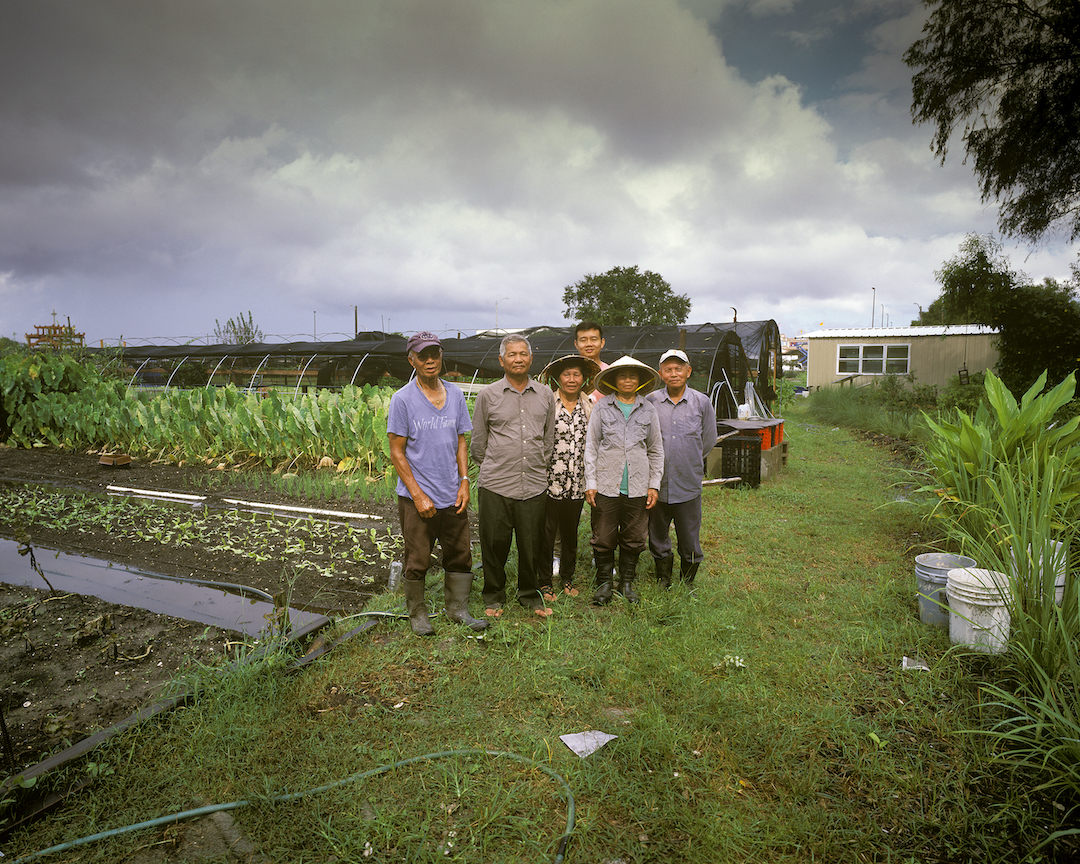
Farmer’s Cooperative of New Orleans East
Digital print
40 x 50 inches
2018
NFS
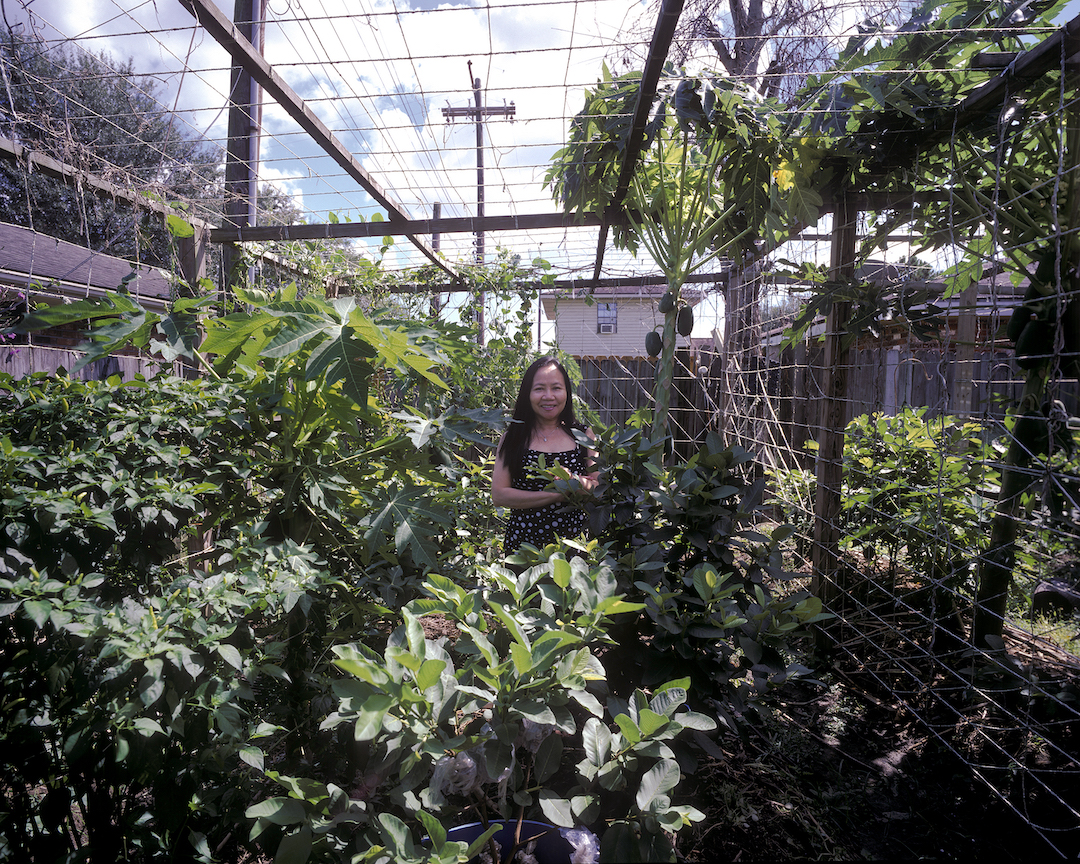
Phụng Anh Duong of Morgan City, LA
Digital print
40 x 50 inches
2018
NFS
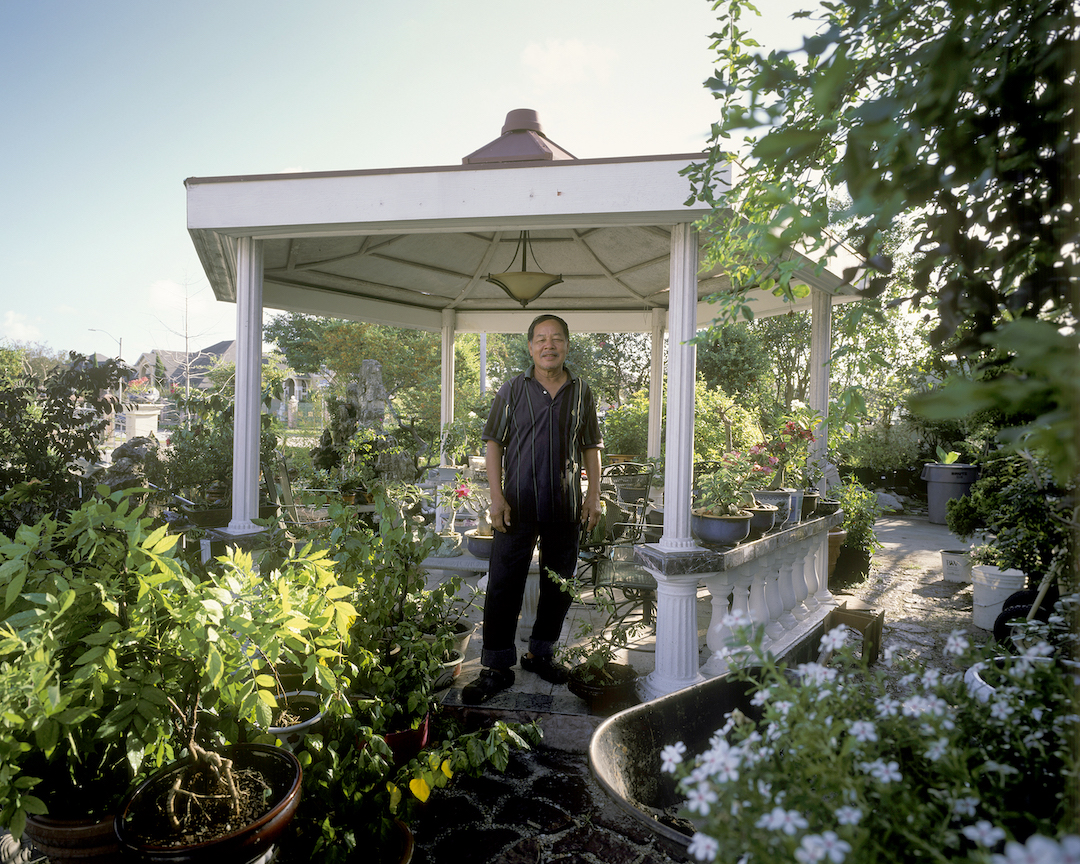
Thiệu Văn Lý of New Orleans East, LA
Digital print
40 x 50 inches
2018
NFS
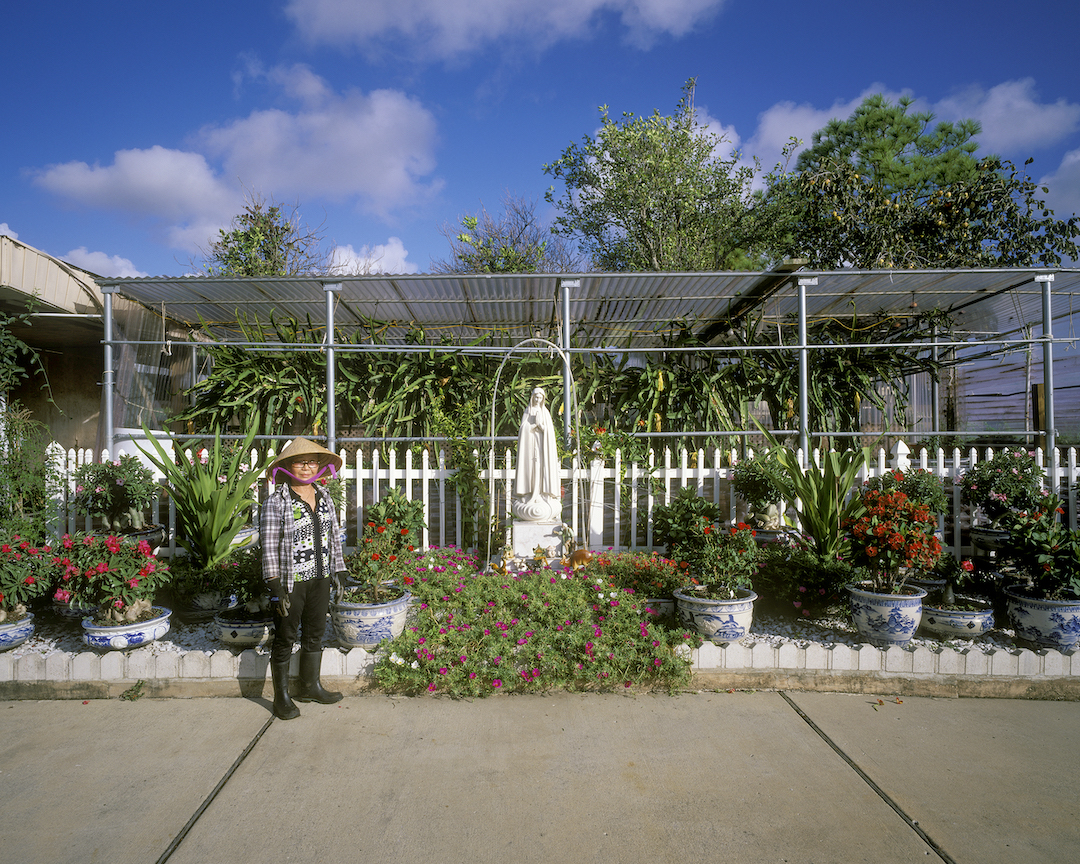
Quế Thị Nguyễn of New Orleans East, LA
Digital print
40 x 50 inches
2018
NFS
From the Series — Immortality: The Remnants of the Vietnam and American War
My work investigates my Vietnamese-Cambodian heritage and our collective memory of wars in Vietnam, Cambodia, and Laos. The themes of mortality, memory, history, landscape, justice, evidence, and spirituality encompass the work. My technique incorporates my invention of the chlorophyll process, in which photographic images appear embedded in leaves through photosynthesis. My newer work focuses on nineteenth-century photographic processes, applying them to investigate battlefield landscapes and contemporary memorials. A recent series of daguerreotypes celebrated the United States National Park system during its anniversary year.
In this series, I have recorded the images of the Vietnam War onto and into tropical plants. One summer, I was motivated to experiment with photosynthesis and its pigments after watching the lawn change color due to a water hose placed on it. Soon after that observation, I was making chlorophyll prints. In my work, photosynthesis is used to record images onto leaves. The leaves are then cast in resin, like biological samples for scientific studies. The image formation was all due to chlorophyll and light, the life source of plants and, consequently, the Earth. This process deals with elemental transmigration, the decomposition and composition of matter into other forms. The images of war are part of the leaves and live inside and outside them. The leaves express the continuum of war. They contain the residue of the Vietnam War: bombs, blood, sweat, tears, and metals. The dead have been incorporated into the landscape of Vietnam during the cycles of birth, life, and death through the recycling and transformation of materials and the creation of new materials. Since matter is neither created nor destroyed but only transformed, the remnants of the Vietnam and American War live on forever in the Vietnamese landscape.
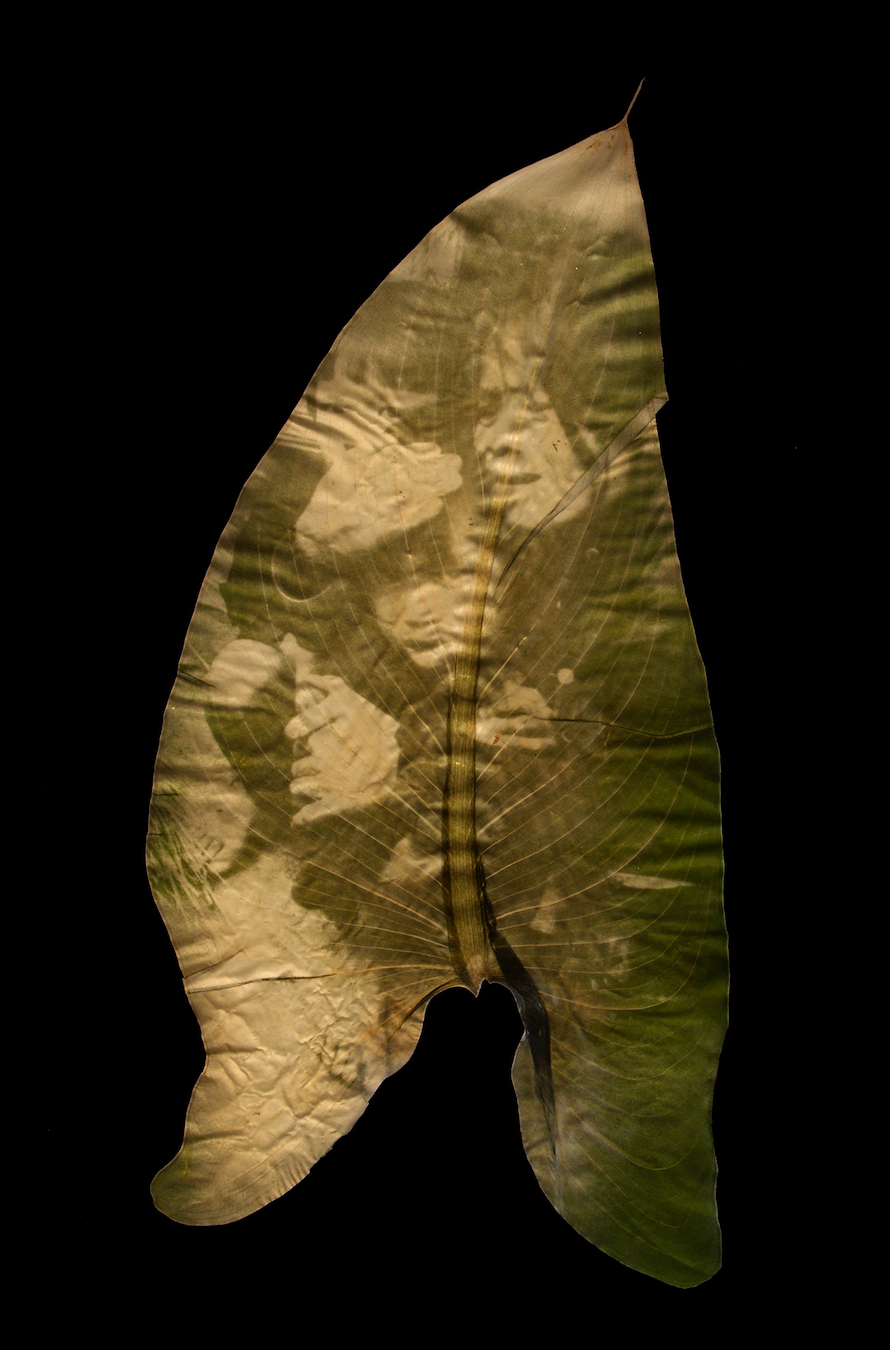
Holding #1
From the Immortality: The Remnants of the Vietnam and American War series
Chlorophyll print and resin
17.5 x 13.5 inches
2009
NFS
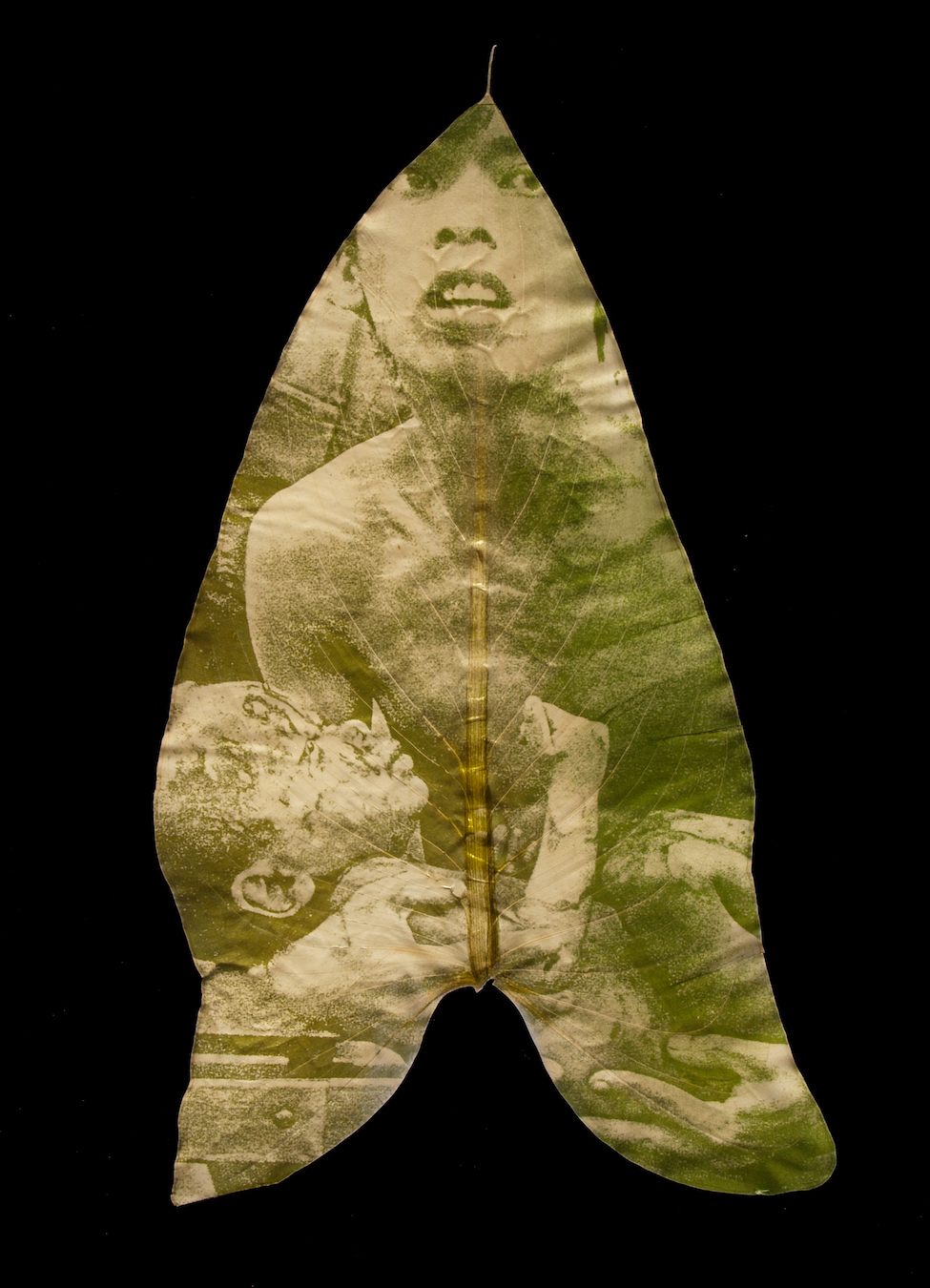
Holding #2
From the Immortality: The Remnants of the Vietnam and American War series
Chlorophyll print and resin
15.625 x 13.5 inches
2009
NFS
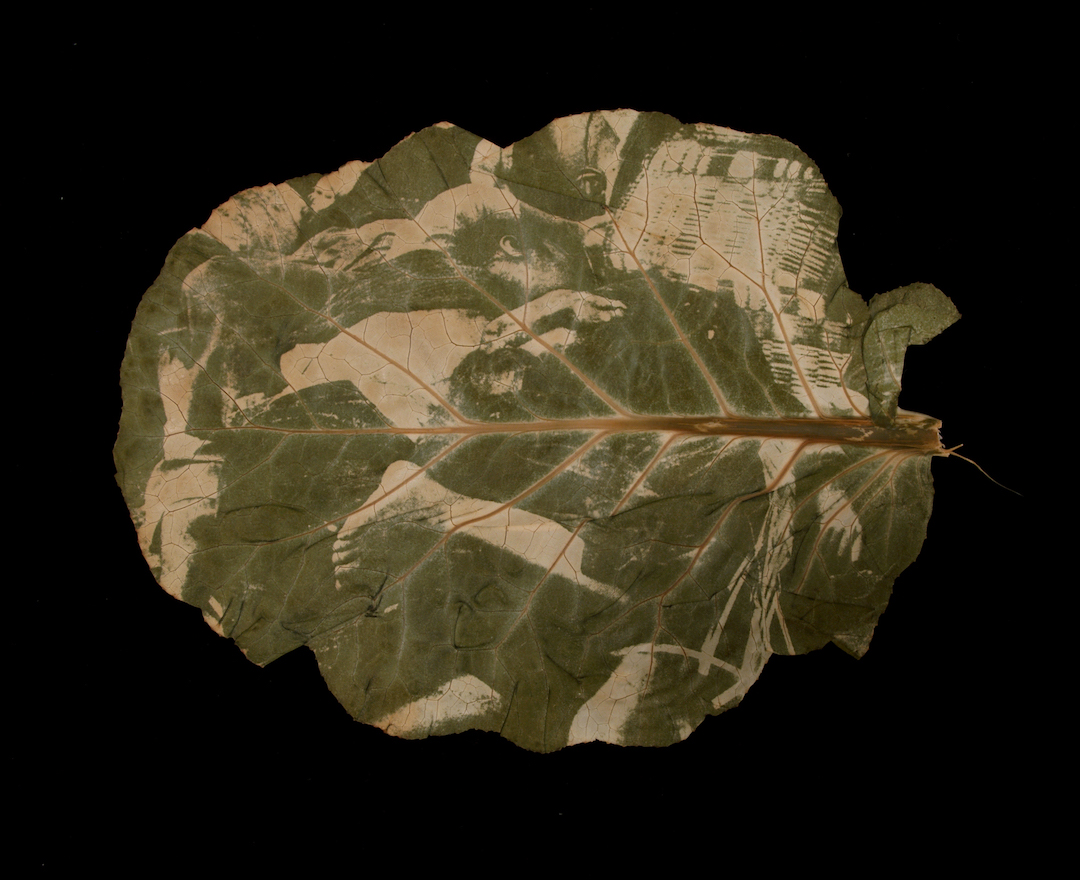
Untitled (parts of war)
From the Immortality: The Remnants of the Vietnam and American War series
Chlorophyll print and resin
9 x 10 inches
2005
NFS
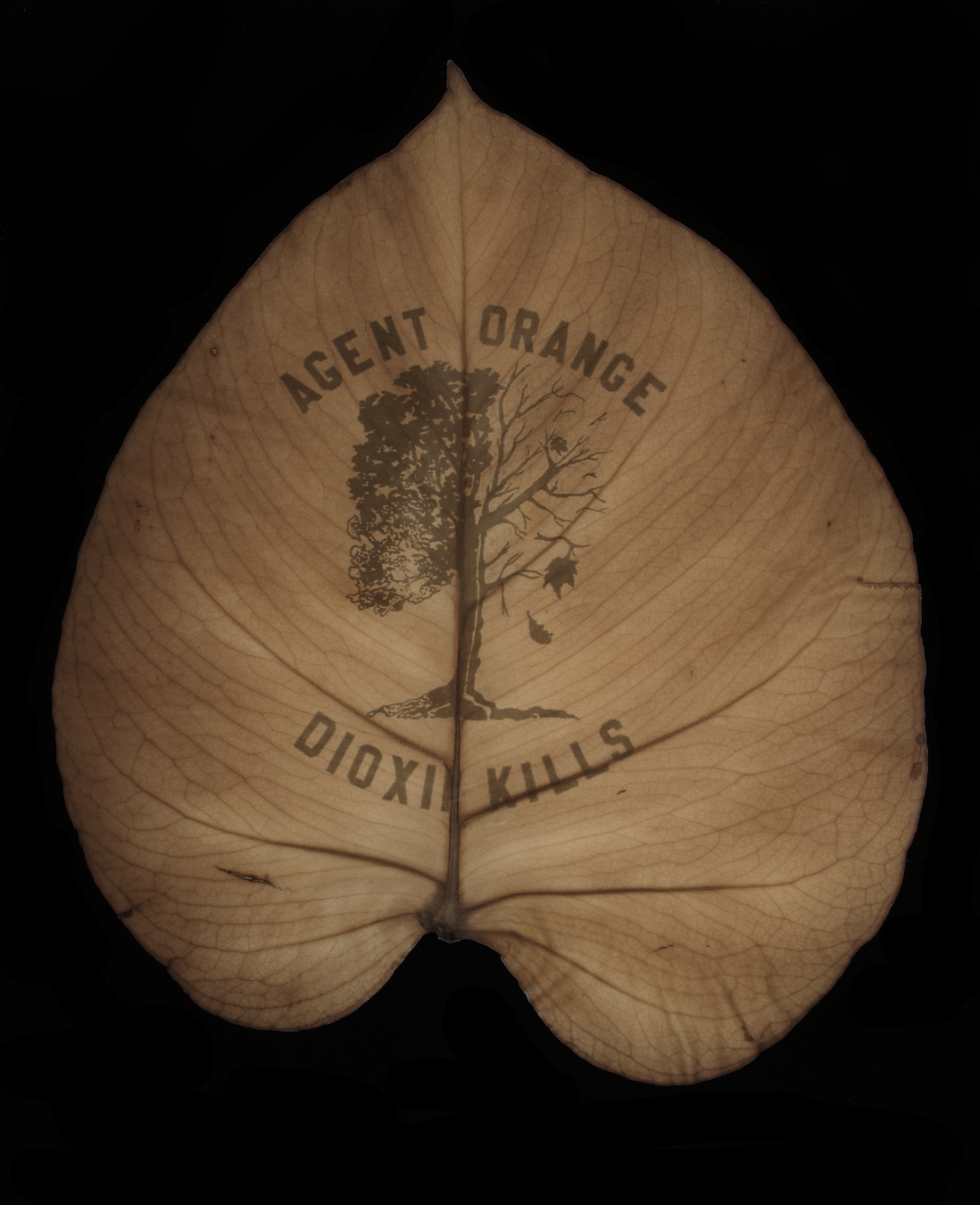
Dioxin Kills
From the Immortality: The Remnants of the Vietnam and American War series
Chlorophyll print and resin
13 x 14 inches
2008
NFS






